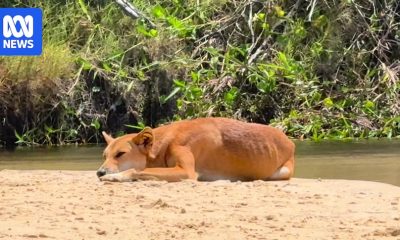Science
SpaceX launch of 57 Starlink satellites that wear sun visors delayed again – CNET
The first launch of a big batch of satellites equipped with shades to reduce their brightness was set to blast off soon.

This Falcon 9 rocket launched in November 2019, carrying 60 Starlink satellites.
SpaceX
The latest SpaceX Starlink launch from Cape Canaveral, Florida, has been postponed for the third time in three weeks.
Blastoff was originally set for June 26 but was delayed to address technical concerns and then delayed again on Wednesday because of weather that wouldn’t cooperate. Now SpaceX has scrubbed a planned Saturday morning launch to allow more time for technical checkouts.
Standing down from today’s launch of the tenth Starlink mission to allow more time for checkouts; team is working to identify the next launch opportunity. Will announce a new target date once confirmed with the Range
SpaceX (@SpaceX) July 11, 2020
When it finally gets off the ground, the Falcon 9 rocket will carry a payload that includes the first batch of SpaceX’s broadband satellites equipped with a sunshade to reduce their brightness.
Since Elon Musk’s company began launching the small satellites over a year ago, astronomers and other observers have been surprised and even disturbed by the amount of sunlight the orbiting routers reflect, often interfering with scientific observations.
Musk and SpaceX have been working with major astronomical organizations on the problem and have pledged to fix the issue as they ramp up plans to launch tens of thousands of the satellites in the coming years.
Initially, SpaceX tried launching a so-called “darksat,” which was essentially a Starlink satellite with a dark coating, but the results from this approach were mixed. Next the company developed and tested a deployable sunshade that it calls VisorSat.
One VisorSat-equipped satellite was launched earlier this month to test the new tech, and the next launch will carry the first batch of satellites to be fully shaded.
A June 30 Falcon 9 rocket launch carried aloft a new GPS satellite for the US military. That was followed by the first SpaceX landing after sending a military satellite to space.
Once we have a new launch date, we’ll be sure to update this story.

-

 Noosa News24 hours ago
Noosa News24 hours agoAustralia’s $4 billion illicit tobacco trade has become one of the nation’s most violent criminal markets
-

 Noosa News16 hours ago
Noosa News16 hours agoEmerald house fire victims identified amid police probe
-

 General13 hours ago
General13 hours agoQueensland considers allowing dingoes to be kept as pets
-

 General22 hours ago
General22 hours agoFrance calls for EU probe into Shein sex dolls, weapons
